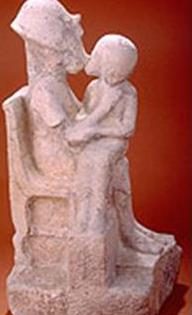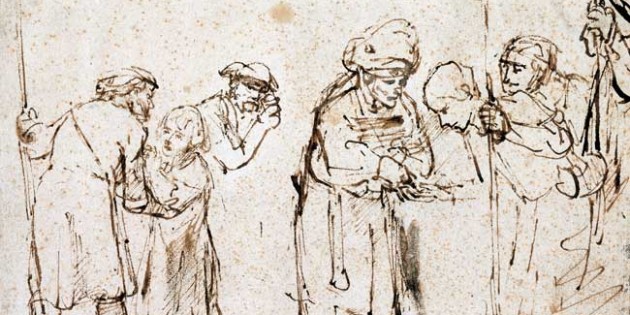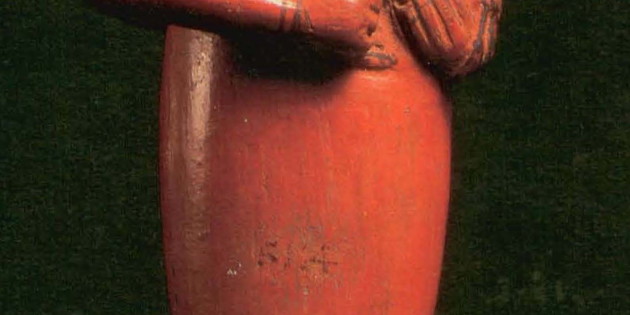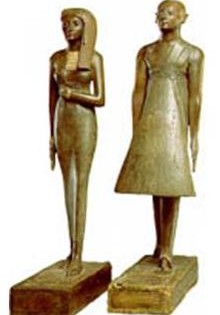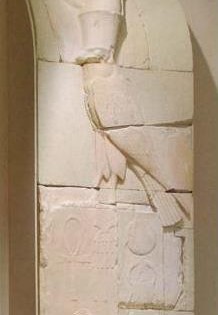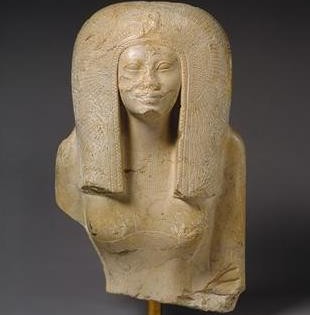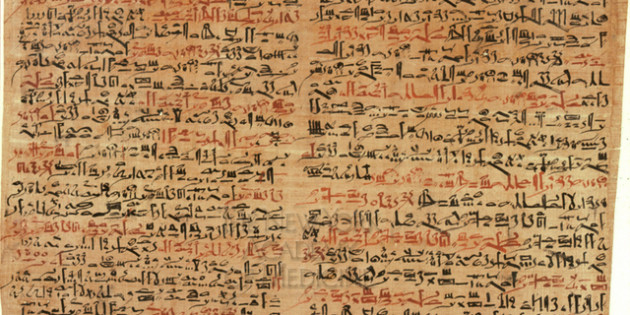Home » Archives for July 2008
Archive for July, 2008
Father of Tutankhamen Not long after Amenhotep III died, in 1353 B.C., masons entered his mortuary temple and methodically chiseled out every mention of Amun, the god said to have fathered the great pharaoh. Astonishingly, the order to commit this blasphemy came from the king’s own son. Crowned Amenhotep IV, he changed his name […]
This head, originally part of a larger statue, was found in the mortuary temple of Amenhotep III in Thebes, Egypt. Amenhotep III reigned from c. 1390 – c. 1352 BCE. He is shown wearing a red crown, the symbol of Lower Egypt. The British Museum See also- BBC Historic Figures- Amenhotep III (c.1391 – c.1354 […]
Joseph Is Sold by His Brothers, Rembrandt (1606-1669). Genesis 37-50 describes the journey and settlement in Egypt of Jacob and his children. Joseph sold by his brothers When the Midianite traders passed by, they pulled Joseph up out of the pit. They sold Joseph for twenty pieces of silver to the Ishmaelites, who brought Joseph […]
Woman Playing the Lute From the Theban area Pottery, h. 21.5 cm, 8 ½ in. British Museum, London Small troupes of female musicians and dancers were all the rage at banquets during the 18th dynasty. They appear in wall paintings and reliefs in a number of tombs, especially at Thebes, but also at Memphis. The […]
Although modern settings of many Egyptian temples are very picturesque it is unlikely that landscape played an important part in the architect’s plans. The temple was deliberately separated from its surroundings by enclosure walls and proected from any possible encroachment by the forces of evil and chaos from outside by a pylon, a massive front […]
According to the inscriptions on the pedestal they lived in Thebes in the 15th century B.C.E. and were priests of the funeral cult of pharaoh Tutmes I in the temple Amona-Ra in Karnaka. The sculptor subtly conveys the texture of the fabric of the transparent material of Rannai, long dress and the flat starched garment […]
The panels are primarily a hieroglyphic device for the portion of the royal titulary that identifies the king with Horus, who is depicted as a falcon wearing the Double Crown and symbolizes the living ruler. The “Horus name” of Senwosret appears on each panel together with his coronation name or his personal name. Beneath the […]
Statue of Queen Ahmose-Nefertari, New Kingdom, Dynasty 18, reign of Ahmose, ca. 1550–1525 B.C. Egyptian Limestone; H. 11 in. (28 cm) Rogers Fund, 1916 (16.10.224) Queen Ahmose-Nefertari was the wife of Ahmose, first king of Dynasty 18. Probably the daughter of Kamose, last king of Dynasty 17, she wielded considerable influence for almost fifty years […]
The Edwin Smith Surgical Papyrus, dating from the seventeenth century BC, is one of the oldest of all known medical papyri. It was written by an Egyptian surgeon about 1600 BC, but is believed to be a copy of a much older text, perhaps as old as 3000 BC. It describes 48 cases that an […]
The story of Abraham is related in Genesis 11-25. Lech Lecha “The Lord said to Abraham, Go forth from your native land and from your father’s house to the land that I will show you.” – Genesis 12-1 Abram in Jerusalem “ When he (Abram) returned . . . King Melchizedek of Salem brought out […]

